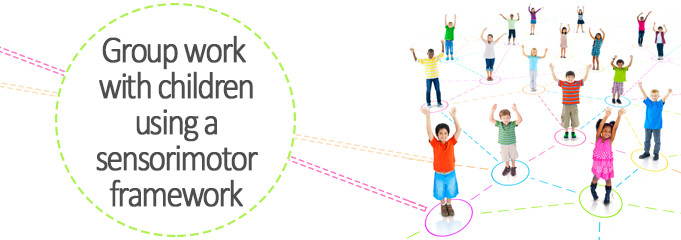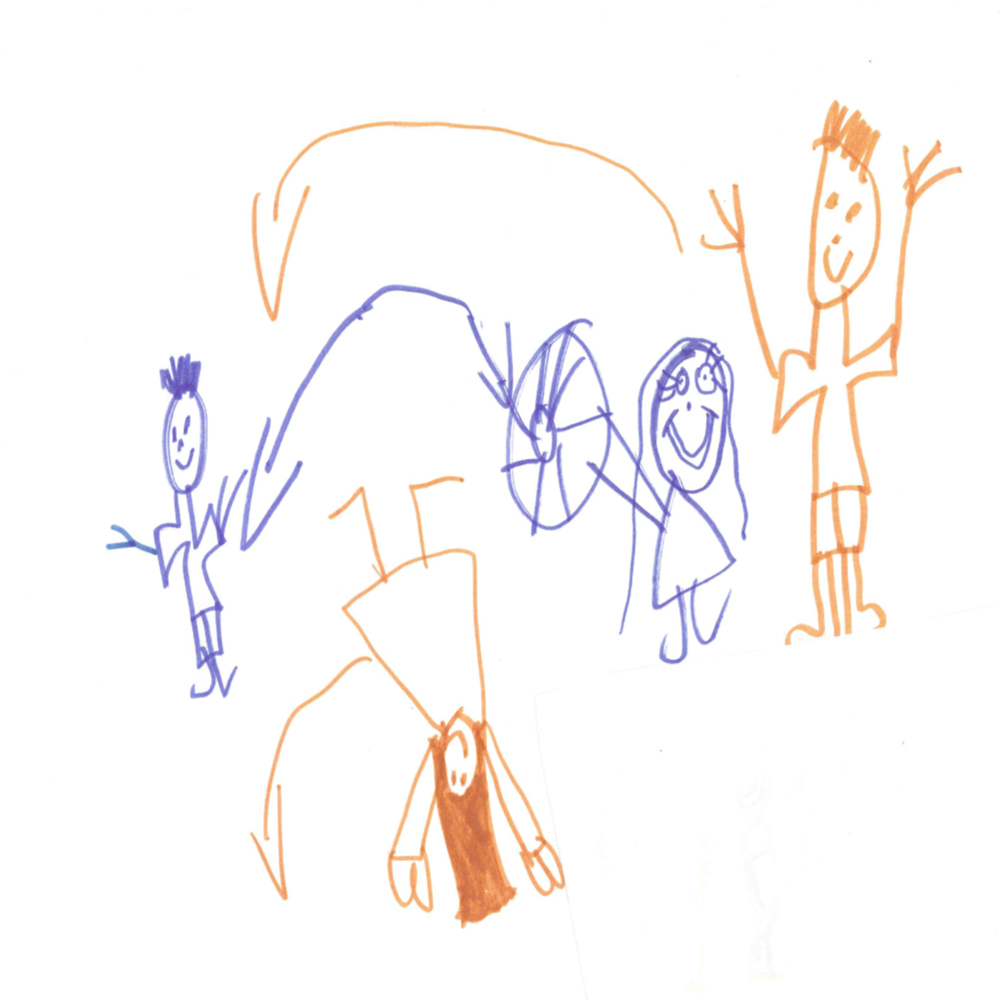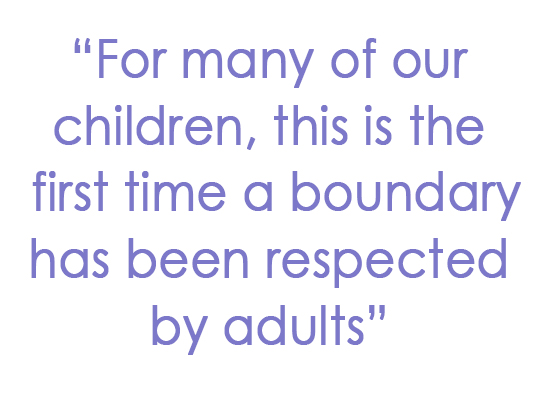
Groupwork with children using a sensorimotor framework
This article was authored by Tamara Wolan,
Senior Counsellor, Child Trauma Service Victoria,
at the Australian Childhood Foundation.
Within the Victorian Child Trauma Service, we are constantly working on ways to engage and support children that incorporate the most current theory and research into trauma recovery. An example of this is our Cool Moves for Kids group, a body and movement based group designed within a sensorimotor framework. The group focuses on assisting children to connect with their bodies and emotions within a group setting. The programme is largely experiential with a focus on building children’s resources, improving their regulation skills, supporting sensory integration, developing flexibility in behavioural patterns and developing stronger connections within their relational world.
How does it work?
Since developing the program two years ago, we have run six groups. The program is facilitated by two staff members and is run with 5-6 children aged between 7-12 years of age, and runs for two hours each week for ten weeks.
It includes a warm up with structured activities focused on themes such as ‘safety’, ‘understanding our bodies’ and ‘learning how to slow our bodies down.’ Each week children and their parents engage in relaxation together before sharing some morning tea and engaging in a joint activity between parent and child. Together everyone engages in a farewell exercise before ending the group.
An example of the activities used in the group
Going on a Bear hunt
Going on a bear hunt is a sensory and movement based activity designed to help children to better notice signs of activation in their body. We first sit with the children and read the book ‘Going on a bear hunt.” This book is a rhythmic way to explore sensation, monitoring how your body responds in anticipation of a possible threat as the plot of the book continues.
We then engage children in acting out the story using props within the group space, devising new sensations and obstacles based on things that the children enjoy and would not find too threatening. One obstacle might be eating your way through a chocolate chip cookie wall or running under a waterfall. Using props , we ask children to track their body and body sensations as they engage in the activity, helping the child to notice their experience of arousal, building in anticipation as we chant the story and song.
Safe spaces
In the safe spaces activity children are supported to build a safe space. To do this they define their personal boundary, identifying it and then labelling it with signs that signal the importance of their space to others. Children are asked to think about what protection their space might need and given the time to create this.
Once their space is created, the child is invited to explore who and how others may enter (if at all) and to write a sign on a sheet of paper for others to read and respect. Some children make one sign, others make ten and place them all around their space.
 Children and facilitators then walk around reading and responding to the signs and testing how safe and accurate the boundary and space feels, moving towards and away from the space. For many of our children, this is the first time a boundary has been respected by adults and by other children and gives these children a language to describe what they need in terms of safety and personal space. In this activity children are also taught how to track their body responses for cues that they need to establish a safe space and boundary.
Children and facilitators then walk around reading and responding to the signs and testing how safe and accurate the boundary and space feels, moving towards and away from the space. For many of our children, this is the first time a boundary has been respected by adults and by other children and gives these children a language to describe what they need in terms of safety and personal space. In this activity children are also taught how to track their body responses for cues that they need to establish a safe space and boundary.
Relaxation
A primary goal for the children in this group is helping them to manage high arousal and learn how to engage in relaxation. Many of these children have never experienced the sensation of a safe level of reduced arousal and activation. Relaxation is a very hard concept to introduce for children who have constantly been living in a hyper-aroused state. Our aim in relaxation is to provide containment and grounding to the child in order to support them in experiencing a reduced arousal state.
We slowly move towards reduced energy activities until we come to relaxation time with an expectation initially that this time may only last for a few minutes. We support children to sit or lie on a mat and to wrap themselves in pillows and blankets. We dim the lights and do this carefully tracking for safety and then give each child a torch to shine onto the ceiling. We ask the child to focus their attention on the light shining on the ceiling and engage them in movement and visualization activities to support this attention and focus. We ask children to imagine that the torch on the ceiling is a star growing in strength and light, taking in all the dreams and wishes of the children on the earth below. The children then move their torch around the ceiling as the star shoots across the sky making these dreams and wishes come true. Children are then asked to find another star in the sky to say hello and dance with. The stories and movements become more elaborate as the children improve in their ability to remain in this state. Over time we introduce breathing, visualisation and the use of relaxation weighted teddy bears to support body awareness during relaxation.
Outcomes
In order to evaluate the effectiveness of the group, we have administered psychometric measures which often show varied and different results in terms of improvement and reduction in symptoms. We feel this may be due to the fact that each child comes to the group with their own areas of development, with the varied results reflecting differences in individual needs.
Some general outcomes that remain consistent across the five groups include improvements in social and regulation skills for children, a reduction in externalising difficulties and in symptoms of depression. When examining the impacts on the parent-child relationship, a consistent outcome is often increased parenting confidence and connection with their child.
We have consistently found that across the five groups, children provide positive feedback about the main activities and can reflect on improvements in managing their emotions and trauma triggers. By far the most positive experiences for these children are:
- the structured and directed attunement time spent with their parents each week,
- their sense of social connection in the group, and
- feeling that they make and can maintain friendships in the space.
This helps to remind us that while we target regulation and arousal management, the outcome for children is often that they develop the capacity to form and connect with important relationships in their life.
After completing the group, children are asked to draw a portrait of themselves together with a summary. The following is the reflection one child wrote:
“This is a girl who really liked making the relaxation bear. She learnt that she is caring and can take care of others, but also needs to keep herself safe and let people help her when she needs it.” (11-year old girl).
Do you have any questions for Tamara regarding this group?
Do you know of other groups for children using a sensorimotor framework?
